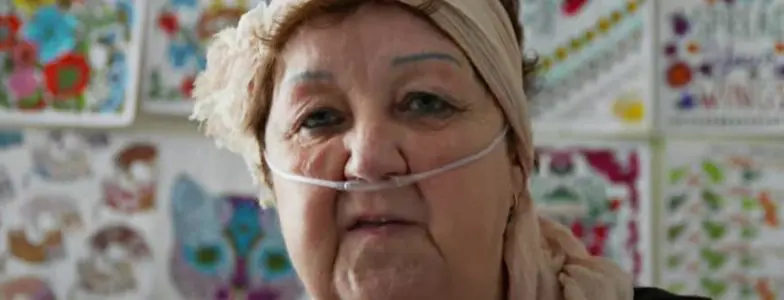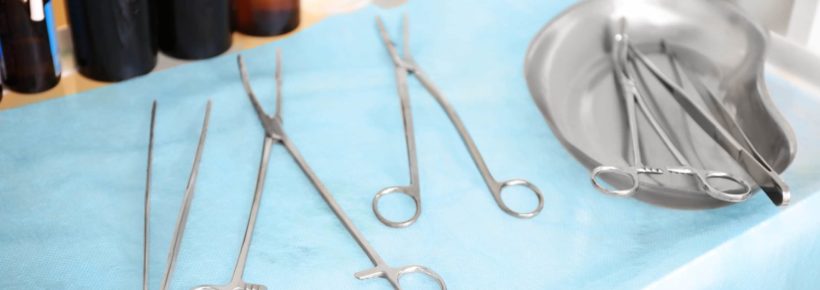Norma McCorvey. A name that often evokes sadness. A name that grew to also signify courage. Now a name riddled in controversy since the release of a documentary entitled AKA Jane Roe this past spring. Over the last 47 years, the woman who would become Jane Roe in the infamous Roe v. Wade Supreme Court abortion case was the subject of numerous articles, stories, and books. Her life was painful and full of tragedy. Yet, through pro-lifers, she found a faith in God. She found peace.

Norma McCorvey: Early Life
Norma McCorvey was born in Louisiana in 1947. Her family moved to Texas when she was young. Norma grew up in a poverty-stricken home as the younger of two siblings. In AKA Jane Roe, Norma claims that her mother never wanted a second child and made her feel worthless. Unable to handle the family pressures, Norma’s father left when she was young. Her mother drank excessively. Norma called her “a two-faced bitch” who frequently demeaned and slapped her. Hating her home life, Norma ran away with a friend at the age of 10.
Norma recounts the story of how she stole money from a gas station cash register and then checked into an Oklahoma City hotel with her best friend, Rita. When a cleaning lady walked in on Norma and Rita kissing, she called the police. From there, Norma McCorvey was sent to a reform school. She lived there until she was 15.
When she was released from reform school, she went to live with a male relative. Norma claims this man sexually abused her.
During this time, she began working as a car hop at a fast food restaurant. There, she met a 22-year-old man named Woody. After a brief relationship, they got married. When she told him she was pregnant, he hit her. Unwilling to put up with abuse, Norma kicked him out and divorced him. She soon gave birth to their daughter.
Norma spent the next several years drinking, doing drugs, and going in and out of relationships with both men and women. Her mother and stepfather took custody of her daughter and raised her for most of her childhood.
How Norma McCorvey Became Jane Roe
Soon, Norma got pregnant again. She gave that baby up for adoption. In 1969, she became pregnant for the third time. This time, she wanted an abortion. Norma admits that she was a “drunk” and a “drug addict.” In the hopes that she could get an abortion, she told her doctor that she was raped. Texas allowed abortions only in certain cases, but Norma did not fall into any of those categories. So she went to an illegal abortion doctor. When she saw the conditions of his office, she left in disgust.
She then sought the assistance of an adoption lawyer. The lawyer recognized right away that Norma McCorvey would be a good plaintiff to challenge Texas’ abortion law. He knew two recent law school graduates, Sarah Weddington and Linda Coffee, who wanted to challenge the law. They needed a poor woman who was neither articulate nor educated and who did not have the resources to travel to another state where abortion was legal. Norma was the perfect candidate.
Charlotte Taft, a staff member at an abortion clinic who knew Norma, admitted that “an articulate educated person could not have been the plaintiff in Roe v. Wade.”
And why is that? The lawyers needed someone who was pliable—someone who would do as they said. They needed someone who would allow them to handle the case as they wanted. They needed someone easy to manipulate.
So, in March 1970, Norma McCorvey signed the affidavit that brought Roe into being. The case went all the way to the Supreme Court. And three years later, on January 22, 1973, in a 7-2 decision, the Supreme Court decriminalized abortion in all 50 states.
Exposing the Back-Alley Abortion Myth
One of the arguments for legalizing abortion was to make it “safe” for the woman. Pro-abortionists often claimed that the only recourse women had was a filthy abortion clinic.
Safe is a relative word, of course. We know that no abortion is safe for a child.
But just how prevalent were back-alley abortions? Did many women die in them? Those who were part of the pro-abortion movement before Roe v. Wade later divulged that they, as a group, exaggerated the amount of deaths. They promoted the lie that claimed that deaths would be in the hundreds or thousands. In reality, that number was far lower. According to HLI’s Brian Clowes, PhD, “The actual Centers for Disease Control (CDC) figures on deaths caused by abortions, both legal and illegal, for those years immediately before Roe v. Wade (1973) were 90 deaths in 1970, 83 deaths in 1971, and 90 deaths in 1972. In 1974, there were 54 recorded deaths and in 1975 there were 49.”
Yes, Norma said that she had gone into a filthy clinic, but those kinds of clinics were the exception rather than the rule. In his article, Dr. Clowes quotes Dr. Alfred Kinsey, who stated that “about 87 per cent of all the induced abortions that we have in our records were performed by physicians.” Further, “Dr. Mary S. Calderone, founder of SIECUS, wrote, ‘The [1955 Planned Parenthood] conference estimated that 90 per cent of all illegal abortions are done by physicians.’”
One only has to look at the filthy conditions of Dr. Kermit Gosnell’s Philadelphia clinic to realize that decriminalizing abortion does not mean that women are safe.
Norma McCorvey After Roe
After abortion was decriminalized, Norma began working in an abortion clinic. She sometimes spoke at rallies but not often. In the documentary, Charlotte Taft admitted that Norma McCorvey wasn’t a good spokesperson because she was not articulate enough. She said Norma often spoke impulsively and that they couldn’t trust or predict what she might say. Taft gives as evidence to the fact that, during a TV interview, Norma admitted that the baby she sought to abort was not actually conceived in rape.
In the early 1990s, the pro-life organization Operation Rescue moved in next door to the abortion clinic where Norma worked. Though there was animosity at first, a candid conversation between OR’s Flip Benham and Norma caused Norma to reconsider her stance on abortion. She realized how wrong she had been. She sought forgiveness and wanted to become Christian. Benham baptized her in 1995. Then in 1998, because of the influence of Fr. Frank Pavone of Priests for Life, Norma converted to Catholicism. She began to work as a pro-lifer.
During her years as an abortion clinic worker and prior to becoming a Christian, she lived a homosexual lifestyle with Connie Gonzalez—her girlfriend of over 20 years. When Norma became a Christian, she knew she must change her behavior. Regardless of the attraction one may feel, living in sin goes against God’s will for us. Norma and Connie continued to live together for 10 more years. However, Norma claimed they changed the nature of their relationship and were just friends. Norma moved out in 2006.
Connie died in 2015. Norma died in a nursing home in 2017.
Abortion Falls under the Right to Privacy?
Nine years after Roe v. Wade, and before her conversion, Norma stated: “I’m very saddened that other people want to abolish something that women should naturally already have.”
Do women naturally have the right to kill their children? According to the Supreme Court, the Constitution gives them that right. In Roe v. Wade, the Supreme Court justices claimed that abortion is a right that can be found in the penumbra (or shadows) of the 14th Amendment. The justices asserted that the 14th Amendment, “which prohibits states from ‘depriv[ing] any person of…liberty…without due process of law,’ protected a fundamental right to privacy. Further, after considerable discussion of the law’s historical lack of recognition of rights of a fetus, the justices concluded ‘the word “person,” as used in the 14th Amendment, does not include the unborn.’ The right of a woman to choose to have an abortion fell within this fundamental right to privacy, and was protected by the Constitution.”
Criticism of Roe v. Wade
HLI’s Brian Clowes articulates it well:
The constitutional right to abortion is found not in the Constitution itself, but in a loose reading of it…. When people claim a “right” to privacy in order to cover illicit and sinful actions, as in a constitutional right to abortion, justice always suffers grave damage, because the rights of God and of other persons are simply disregarded.
The right to privacy should never come before the rights of an innocent preborn human being. The sanctity of life is a fundamental right. Killing a person is not.
At the same time as Roe, the justices also decided a companion case. This was Doe v. Bolton, and it overturned Georgia’s abortion law. Georgia law “permitted abortion only in cases of rape, severe fetal deformity, or the possibility of severe or fatal injury to the mother.” According to Judie Brown, president of American Life League:
The Doe v. Bolton case defined the “health of the mother” in such a way that any abortion for any reason could be protected by the language of the decision. Its definition of health includes “‘all factors—physical, emotional, psychological, familial, and the woman’s age—relevant to the well-being of the patient. ALL these factors may relate to health.”
In essence, Roe decriminalized abortion while Doe opened the door for abortion-on-demand.
The Implications of AKA Jane Roe
Controversy surrounds this documentary because it claims that Norma McCorvey faked her pro-life beliefs. Further, it claims she was a pawn for the pro-life movement, which never really cared about her well-being and saw her as only a trophy.
Should pro-lifers be concerned about this documentary?
Yes and no. While it is disturbing that the filmmakers imply that Norma faked her dedication to the pro-life movement, those who knew her well say that this cannot be true. Regardless of the documentary’s many inconsistencies, the out-of-context quotes, the hazy timelines, and clips that were clearly edited to give a slant in a certain direction, pro-lifers who knew her say that she could not have been faking her pro-life convictions for over two decades.
Norma’s Friends Tell a Different Story
According to Fr. Frank Pavone:
I received her into the Catholic Church in 1998…. We led her through an intense spiritual and psychological healing process from the wounds she incurred in the abortion industry, had thousands of conversations and spent countless hours both in public and in private, for business and pleasure.
The sacrifices Norma made on this journey of healing are not things you can fake….
What I do know is that the conversion and commitment, the agony and the joy I witnessed firsthand for 22 years was not a fake.
In addition, Fr. Pavone stated:
We saw her do the work of her conversion, namely, the hard work of repenting and grieving, behind the scenes, of her role in both legalizing abortion and helping kill babies in the clinics. The documentary entirely skips this whole aspect of her life—an aspect I was deeply involved in day by day for 22 years, as we counseled her through the grief, the nightmares and the spiritual and psychological path of healing for those who have been involved in the abortion industry. Norma took part in that process willingly and courageously.
Fr. Pavone recounts the day Norma died. Her daughter placed a call to him so he and Norma could speak. According to Pavone, Norma urged him to continue fighting to overturn Roe v. Wade. This was not a woman who had changed her mind about abortion.
What AKA Jane Roe Can Teach the Pro-Life Movement
AKA Jane Roe shows the fragility of Norma McCorvey. The weight she carried was extremely heavy. The burdens were often overwhelming. The documentary also shows a woman who, though she said she always wanted to be an actress, looked extremely uncomfortable in front of cameras. She spoke gruffly and sometimes inappropriately.
One of the accusations against pro-lifers was that they told Norma what to say. In a way, that’s true. They did coach her. But it is not abnormal for someone who isn’t very eloquent or who isn’t used to speaking in front of crowds to be coached regarding what to say. It’s not unusual for knowledgeable people to help novices learn how to articulate their beliefs. Anyone who has ever spoken before a large crowd knows it is difficult and nerve-racking. It’s easy to get tripped up. It’s easy to misspeak. And with such a divisive topic as abortion, it was important that Norma speak in a manner that reflected accurate facts. According to Fr. Pavone, Norma never said anything she didn’t believe.
Compassion, not Criticism
What should disturb pro-lifers the most about the documentary are the images of pro-lifers berating women who are going into abortion clinics. While these people were zealously trying to save lives, it seems that they did not think about the trauma that the mother was going through as she contemplated abortion. They did not think about the stress and the anxiety she must have felt. They weren’t thinking about the fact that she may truly not have understood the implications of what she was about to do. And they did not think about the impact of their harsh words.
Yelling at and berating women serves no purpose. And it rarely changes minds. But love does. We should all put ourselves in the person of Christ and treat others as He would treat people. Did He berate the woman at the well? Did He berate Zaccheus? No. He spoke lovingly and gently because He genuinely loved them. Jesus talked with them and taught them His commandments. He educated them. And that is what we must do.
Victory Through Forgiveness
We are called to evangelize—with both love and compassion—the truth that abortion is murder.
Fr. Pavone wrote that Norma McCorvey “suffered in so many ways. . . . She was so very wounded.”
Any woman who has aborted her child is wounded, whether she wants to admit it or not. And anyone responsible for millions of deaths would also be wounded. The film depicts a clearly traumatized woman whose emotional scars nearly suffocated her at times.
Early in the documentary, while pointing to a picture of Jesus, Norma claimed: “He’s my boyfriend.”
The pro-lifers who knew Norma well understood that she suffered emotional trauma even before she became Jane Roe. But then she found Christ. And, like we all must, she clung to Him. She clung to His love and forgiveness. Those are things we all need. And, like many of the saints, Norma claimed Christ as her beloved.
Norma McCorvey was a complicated and hurt, yet loving, woman who greatly wanted to right the wrong she helped set in motion. She spent the last 22 years of her life speaking for babies rather than against them.
Forgiveness. That is the lesson we must learn from her story.
May she rest in peace.
Susan Ciancio has a BA in psychology and a BA in sociology from the University of Notre Dame, with an MA in liberal studies from Indiana University. Since 2003, she has worked as a professional editor and writer, editing both fiction and nonfiction books, magazine articles, blogs, educational lessons, professional materials, and website content. Fourteen of those years have been in the pro-life sector. Currently Susan writes weekly for HLI, edits for American Life League, and is the editor of its Celebrate Life Magazine. She also serves as executive editor for the Culture of Life Studies Program, an educational nonprofit program for k-12 students.







You might want to watch the Hulu documentary on Norma. She was paid hundreds of thousands of dollars by the Pro-life movement. You may want to add that to your article.
The article does state that the documentary portrayed Norma as being used as a pawn for the pro-life movement. She got money from the two women that brought the case before the Supreme Court and she got money and a job from those from the pro-life movement. She was used by both sides.
Norma made “Hundreds of thousands” over the course of how many years? This is a non issue. I’m sure the abortion clinic paid her as well.